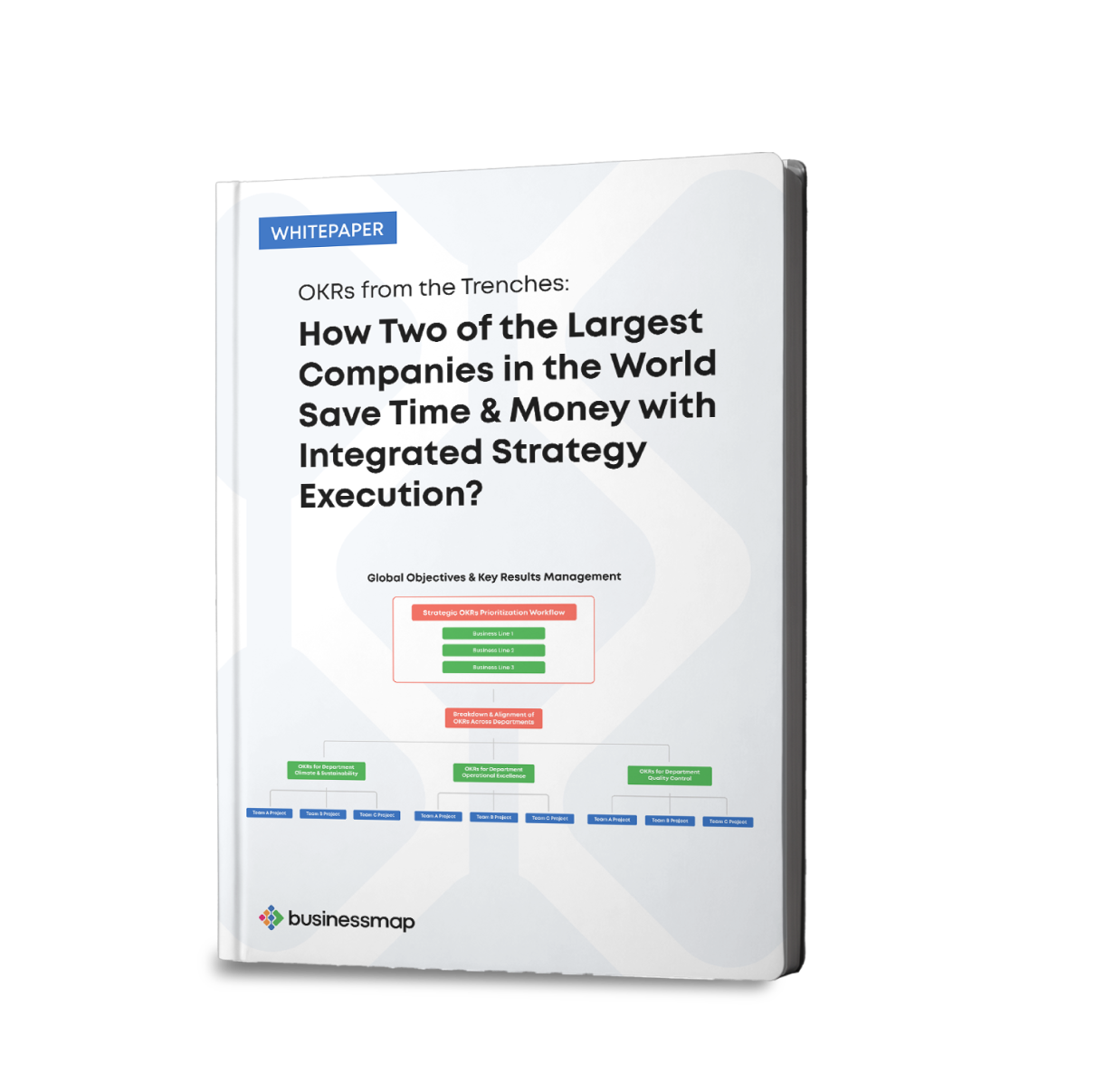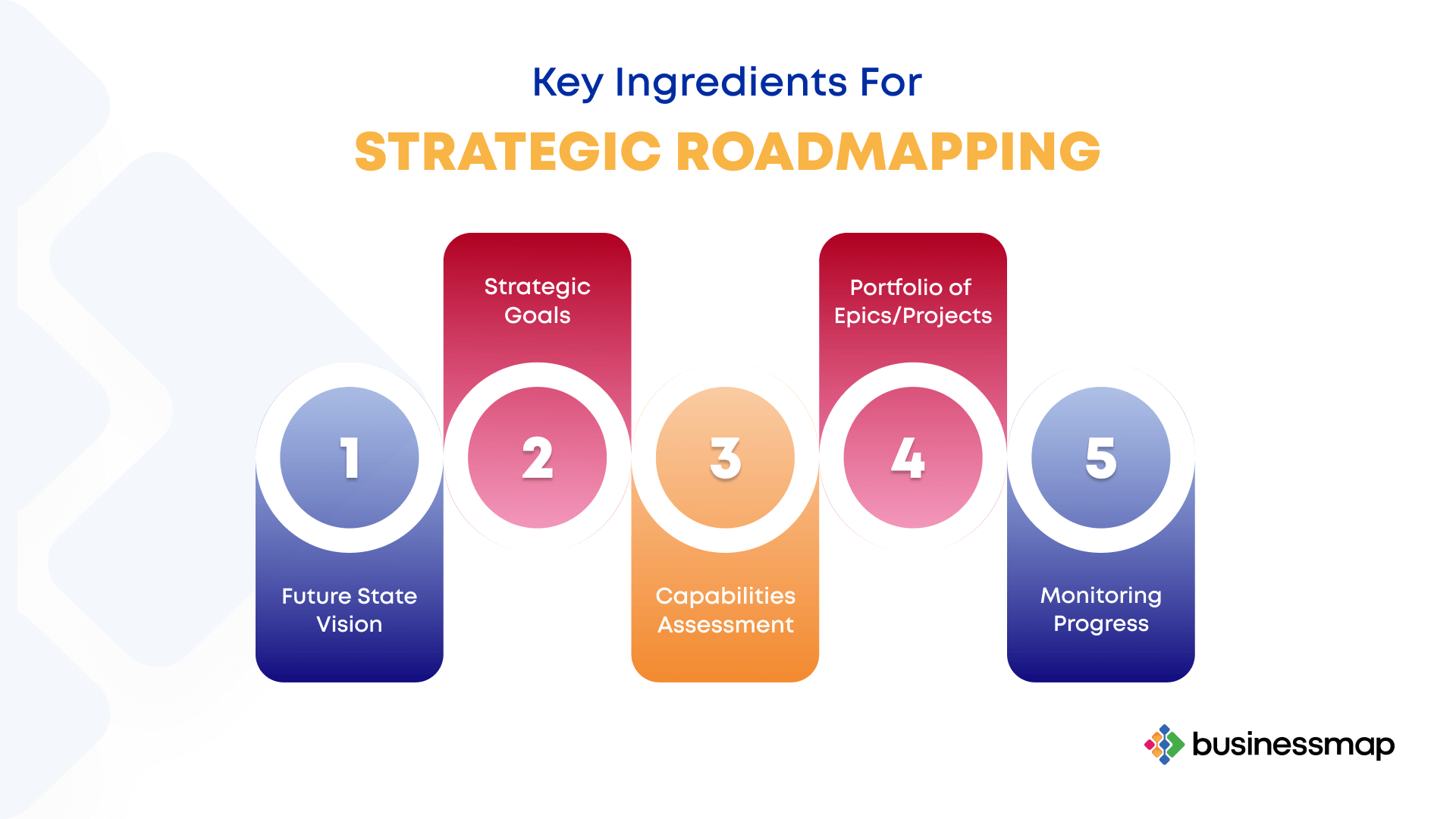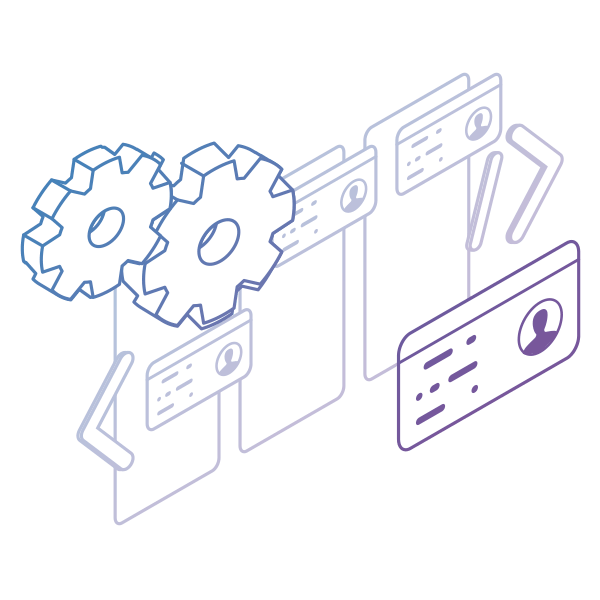Key Takeaways
- A strategic roadmap is a visual guide connecting vision, goals, and initiatives over time.
- It outlines the what and why, while plans focus on the how.
- Core elements include: situational analysis, objectives, capability assessment, execution initiatives, and KPIs.
- Roadmaps ensure alignment across teams, simplify communication, and keep long-term goals in focus.
What Is a Strategic Roadmap?
A strategic roadmap is a high-level visual guide that outlines an organization's vision, goals, and major initiatives over a defined period. It connects strategic priorities with actionable steps, showing milestones, dependencies, and timelines without getting lost in day-to-day details.
In practice, it maps a company's journey from its current state to a desired future state, helping leaders clarify direction and teams prioritize initiatives. Unlike a static plan, a roadmap evolves continuously, adapting to the organization's changing needs.
What Are the Key Elements of Strategic Roadmaps?
Building a meaningful roadmap requires specific elements:
| Element |
Purpose |
Example Practice |
| Situational Analysis |
Understand where the business stands today |
SWOT, PESTLE review |
| Strategic Objectives |
Define high-level goals aligned with vision |
Company-wide OKRs |
| Capability Assessment |
Evaluate resources, staff, tech, and finances |
Value Stream Mapping |
| Execution Initiatives |
Translate objectives into portfolios/projects |
Prioritization frameworks |
| KPIs & Metrics |
Track progress and adapt course |
Customer satisfaction, revenue growth |
How Do Strategic Roadmaps Support Business Objectives and Vision?
Strategic roadmaps serve as a bridge between vision and execution. They ensure leaders and teams understand not just the end goals, but also the reasoning behind them.
- They align stakeholders by putting strategy into one shared picture.
- They connect objectives with execution initiatives, ensuring resources flow toward the right outcomes.
- They simplify communication, reducing misunderstandings and silos.
- They provide flexibility, enabling organizations to adapt as new opportunities or risks arise.
The Economist found that 59% of companies struggle to link strategy formulation to daily execution, underscoring the need for roadmaps as tools for alignment.
How Two of The Largest Organizations in the World Save Time & Money with OKRs?
How Is a Strategic Roadmap Different from a Plan?
Many leaders confuse roadmaps with plans. While related, they serve different purposes:
- A plan explains how objectives will be delivered - detailing responsibilities, deadlines, and step-by-step actions.
- A strategic roadmap focuses on the why and what - highlighting long-term goals, priorities, and the initiatives required to achieve them.
Think of a roadmap as the navigation system showing your direction, while the plan is the itinerary with detailed stops along the way.
How to Build a Strategic Roadmap?
1. Understand the Current Position
Start with a situational analysis to identify strengths, weaknesses, opportunities, and risks. Tools like SWOT or PESTLE give clarity on where your company stands and what gaps to address.
2. Define Strategic Objectives
Derive clear, measurable objectives from the company's vision. Frameworks like OKRs (Objectives and Key Results) help break these into quantifiable outcomes and ensure alignment across departments.
3. Evaluate Capabilities
Assess resources, skills, and delivery capacity. Agile organizations often utilize Lean techniques, such as value stream mapping, to visualize how value flows to customers, identify bottlenecks and risks, or assess their delivery capabilities.
4. Determine Execution Initiatives
Translate goals into actionable initiatives - such as portfolios or programs. Prioritize what drives the most value and begin with high-impact efforts.
5. Define and Track KPIs
Choose metrics that show whether progress toward strategic goals is on track. Monitoring KPIs ensures course corrections can be made quickly.
To dive deeper into how metrics, KPIs, and OKRs work together to strengthen strategic success, check out this expert article on aligning objectives, results, actions, and metrics for organizational success →

Visualizing Strategic Roadmaps with Businessmap
Once objectives and initiatives are clear, visualization brings them to life.
With Businessmap's portfolio boards, organizations can connect company-level objectives to team initiatives and daily tasks. Each strategic objective can be tracked through measurable outcomes, ensuring alignment across all levels. Teams are encouraged to set their own OKRs linked to company goals, fostering autonomy while maintaining direction.
This live roadmap structure ensures:
-
Transparency across teams and departments.
-
Real-time progress tracking via measurable outcomes.
-
Adaptability to adjust when priorities or market conditions change.
A strategic roadmap is not static - it evolves as the business environment shifts, making it a living tool for strategy execution.
Watch this short video to see how you can instantly generate a strategy map with AI in Businessmap, connect strategic objectives to measurable outcomes, and ensure your roadmap translates into execution.
Businessmap is the most flexible software
to align work with company goals










